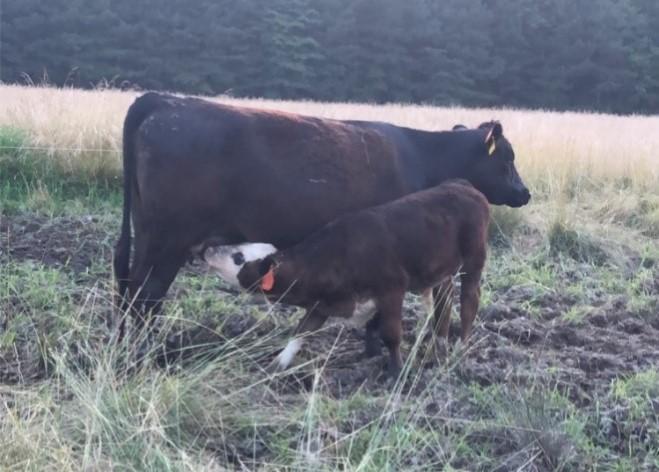
August 2021 | Edition 2

Editor's Note:
My best Angus cow was due to calve at the end of May with a calf out of an AI sire. Eager and anxious to see the result of the previous year’s breeding work, I checked this cow at least three times a day for over two weeks leading up to her due date. As the date got nearer, I began looking up whether I should induce parturition, fearful that she was growing a large calf and would have trouble delivering. At 285 days, I stood out in the field and told her she needed to hurry up and calve. The next night, she had twins. Talk about a good lesson on having patience.
Cattle are animals that require a lot of patience. When working with cattle, if they do something that we don’t want them to, it’s probably because they don’t know what we’re asking of them, or we’re not communicating clearly. Cattle don’t speak our language, but instead, read our body language and placement and act in accordance (minus those select few cows who do whatever they want). Whether it’s working with the cattle, waiting for an antibiotic to treat a sick calf, or waiting to see herd improvements from selective management, raising cattle requires patience.
Happy Trails,
Charlie Sasscer III

Stockpiling Pasture for Fall and Winter Grazing
Dr. Amanda Grev, Extension Specialist, Pasture and Forage
With August upon us, we may still be feeling the heat of the summer at the moment but whether or not we’re ready, cooler temperatures are just around the corner and it's time to be...Read more
Weaning Tips and Vaccination Programs for Beef Calves
Racheal Slattery, Department of Animal and Avian Sciences, University of Maryland
Weaning is one of the most stressful times for calves, and it doesn’t help that it’s also the most common time to give vaccinations. No one wants to work their cattle more than...Read more


Managing Bloat in Pastured Cattle
Dr. Sarah Potts, Extension Specialist, Dairy & Beef
What is bloat and why does it occur?
The rumen is the largest compartment of the ruminant stomach and is home to a host of microbes, such as bacteria, protozoa, and fungi, which...Read more
Charlie Sasscer, UME Prince George’s County
Limit feeding is the practice of feeding cattle less dry matter (DM) than they would naturally consume on their own if given ad libitum (unlimited) access to a forage diet...Read more

Maryland Beef Webinar Series
Join us on the first Thursday of each month from 7:30-8:30 p.m.
| DATE | WEBINAR TOPIC | REGISTRATION/RECORDINGS OF PAST EVENTS |
|---|---|---|
| July 1, 2021 | Managing Heat Stress in Your Cattle Video Length: 37:08 Description: In this webinar, University of Maryland Extension Specialist Dr. Sarah Potts discusses the impacts of heat stress on cattle, how to recognize it, and ways to reduce its effect on cattle. |
Recording |
| August 5, 2021 | Pasture Management for the Fall Season Video Length: 34:32 Description: In this webinar, Extension Forage Specialist, Dr. Amanda Grev, discusses some pasture management practices that can be employed year-round, with particular emphasis on strategies pertinent to the fall season. |
Recording |
| September 2, 2021 | Weaning Beef Calves: Reducing Stress and Building Immunity Video Length: 31:34 Description: In this presentation, University of Maryland Extension Educator, Jeff Semler, discusses the importance of minimizing stress at weaning and tips for success. |
Recording |
| October 7, 2021 | Cattle Nutrition 101 | Register |
| November 4, 2021 | Limit-Feeding Cattle | Register |
| December 2, 2021 | Winter Herd Management Strategies | Register |
Cattle Tales Livestock is a quarterly newsletter published by the University of Maryland Extension that focuses on bringing timely, relevant information to Maryland's livestock producers. To view, previous editions click here...
To subscribe to this newsletter, click the button below to enter your contact information.